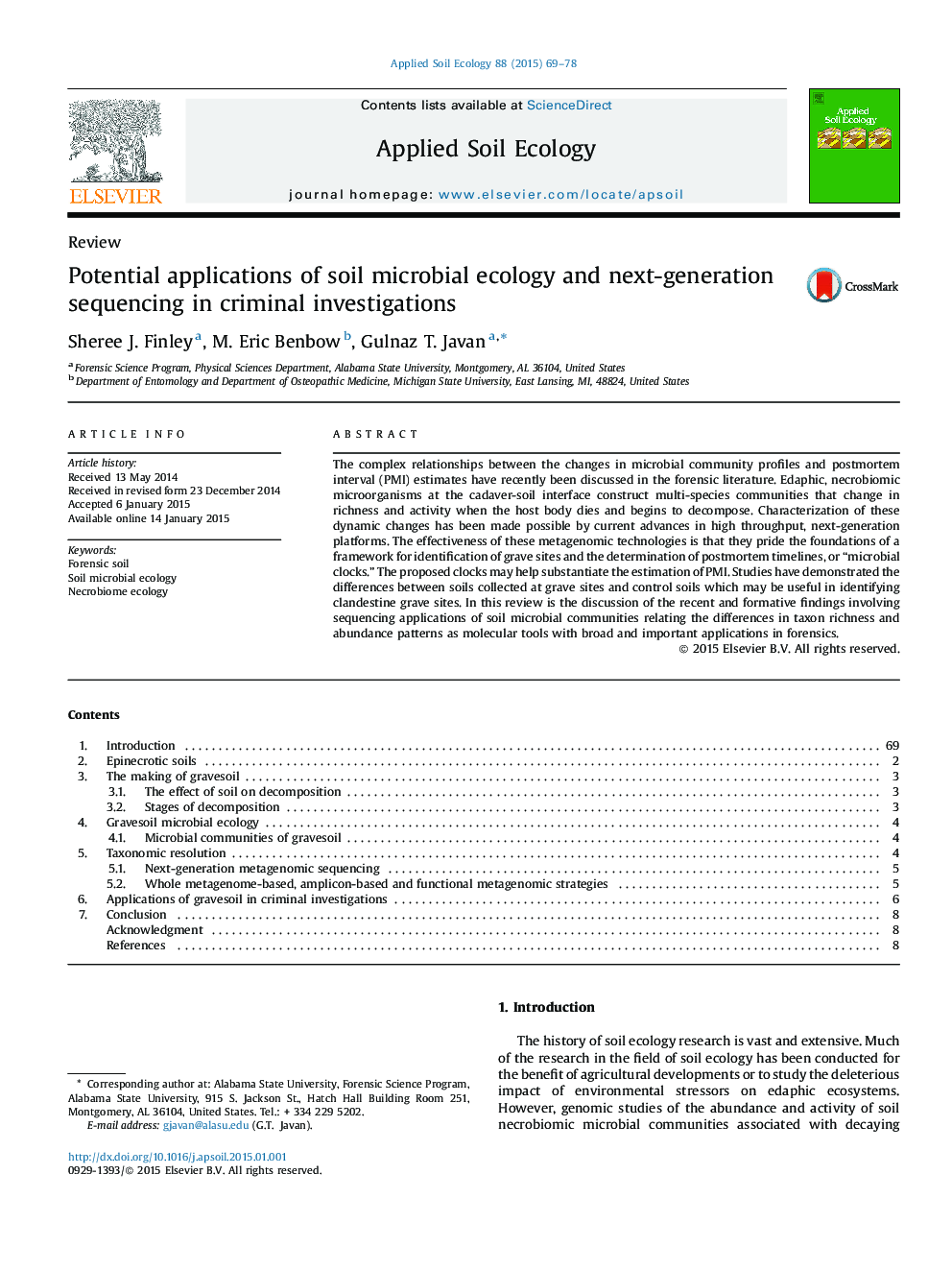| Article ID | Journal | Published Year | Pages | File Type |
|---|---|---|---|---|
| 4382120 | Applied Soil Ecology | 2015 | 10 Pages |
•There is much progress in ecological studies of necrobiomic microbial communities.•The necrobiome at the cadaver-soil interface may be used as forensic tools.•Metagenomic sequencing offers the basis for postmortem microbial clocks.•The proposed postmortem timelines may help substantiate the estimation of the PMI.•New forensic tools are forthcoming from soil metagenomic research.
The complex relationships between the changes in microbial community profiles and postmortem interval (PMI) estimates have recently been discussed in the forensic literature. Edaphic, necrobiomic microorganisms at the cadaver-soil interface construct multi-species communities that change in richness and activity when the host body dies and begins to decompose. Characterization of these dynamic changes has been made possible by current advances in high throughput, next-generation platforms. The effectiveness of these metagenomic technologies is that they pride the foundations of a framework for identification of grave sites and the determination of postmortem timelines, or “microbial clocks.” The proposed clocks may help substantiate the estimation of PMI. Studies have demonstrated the differences between soils collected at grave sites and control soils which may be useful in identifying clandestine grave sites. In this review is the discussion of the recent and formative findings involving sequencing applications of soil microbial communities relating the differences in taxon richness and abundance patterns as molecular tools with broad and important applications in forensics.
Graphical abstractFramework for the classification of necrobiomic microorganisms to estimate postmortem microbial clocks.Figure optionsDownload full-size imageDownload as PowerPoint slide
